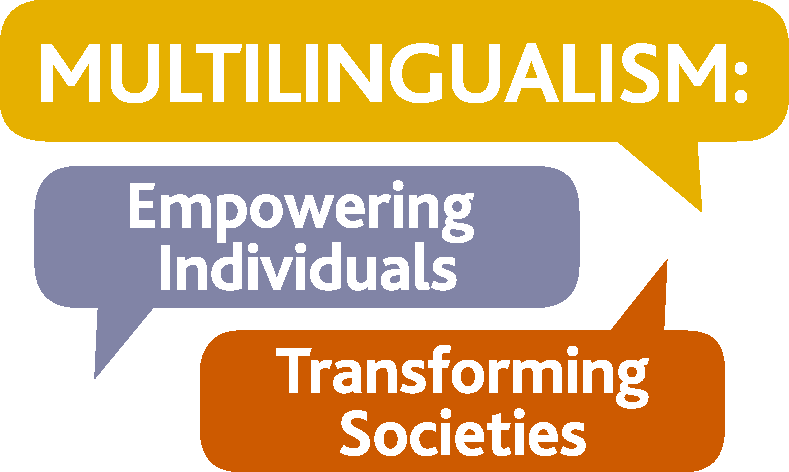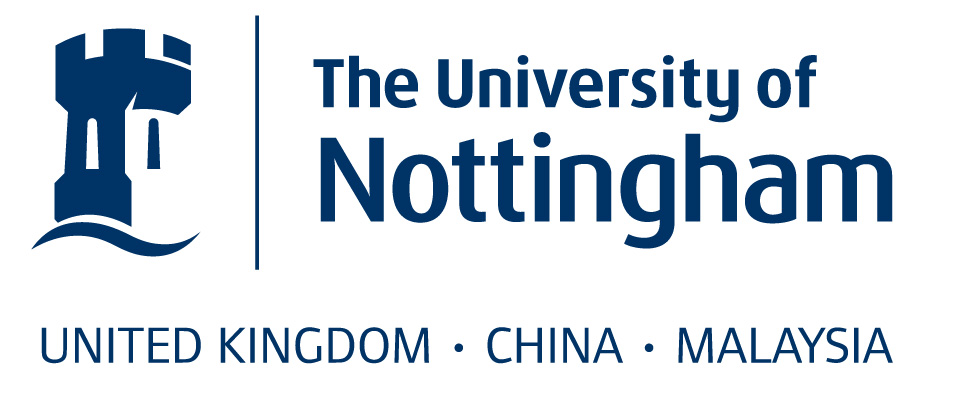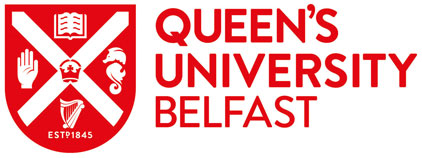- This paper examines the communication, language and literacy assessment required by the 2017 Statutory Framework for the Early Years Foundation Stage (EYFS) and the challenges from this mandate in particular: ‘If a child does not have a strong grasp of English language, practitioners must explore the child’s skills in the home language with parents and/or carers, to establish whether there is cause for concern about language delay’ (p. 9).
- If there is cause for concern, practitioners face three challenges:
- Challenge 1: Providing consistent and objective assessment when relying on parental reports;
- Challenge 2: Assessing children’s skills in the 300-plus home languages of the one million children in English primary schools who do not have English as their first language (DfE, 2019);
- Challenge 3: Determining whether low performance on English assessments is due to (a) limited English language exposure, likely to be resolved through additional exposure in primary school and not requiring specialist intervention, or (b) an underlying language disorder that cannot be resolved through additional exposure alone.
- To address these challenges, we argue for a policy that utilises a small range of evidence-based and easily-administered tests that evaluate language-learning skills, focusing on skills needed to learn word forms (the sounds that make up a word) and word meanings.
Introduction
The updated 2017 Statutory Framework for the Early Years Foundation Stage (EYFS) sets the standards for all English schools and early years providers. The framework mandates two assessments of children’s skills and capacities in ‘Communication and Language’: a) a Progress Check (summarised as a written report) between 2 and 3 years of age, and b) the EYFS Profile, which must be completed by 30 June in the school year that a child turns 5. The purpose is to provide a record of attainment and guidance for pedagogical paths while identifying difficulties in developing the target skills and capacities so additional support can be provided. Amongst the EYFS stated objectives are:
- quality and consistency in all early years settings, so that every child makes good progress and no child gets left behind;
- equality of opportunity and anti-discriminatory practice, ensuring that every child is included and supported (p. 5).
We argue that these objectives are not fully met for the roughly one million children in English primary schools (DfE, 2019; NALDIC, 2015) who have English as an additional language (EAL) and speak one or more of the 300+ additional languages at home. We present new policy proposals for the assessment of communication and language for all children, including those with EAL, in order to meet the EYFS goal of ‘equality of opportunity’.
The importance and challenges of identifying language needs in children with EAL
The EYFS framework recognises the importance of identifying and addressing the needs of children who do ‘not have a strong grasp of English language’, but the EYFS Profile does not address why this may be the case. A child with EAL may have lower English language attainment due to a lack of exposure to English, but it might also be because of an underlying language disorder. Language disorder (LD) is a common childhood concern, affecting 10% of monolingual children entering UK schools (Norbury et al., 2016), and the prevalence of LD in children with EAL is expected to be the same. Children with an untreated language disorder are less likely to enter further education and employment, highlighting the importance of early identification and appropriate intervention.
Current assessment tools that were created for and standardised on monolingual English children are clearly not appropriate for the diagnosis of LD in children with EAL. Unsurprisingly, EAL children as a group score lower on standard measures of receptive and expressive vocabulary, receptive grammar and narrative comprehension. While their performance in English tests is informative about their readiness to cope with the language demands of the classroom, it is not informative about the source of their difficulties and how to support them as the framework aims to do.
The Royal College of Speech and Language Therapists recommends assessing a child in both English and the language(s) of the home to establish the bilingual child’s linguistic profile, an important approach which is more likely to be implemented where one or two languages are widely represented, e.g. Panjabi in Bradford. However, effective assessment and competent assessors or interpreters in the full range of 300+ home languages spoken across UK primary schools are unlikely to be possible. Instead, educators and clinicians have to rely on secondary sources of information, e.g. questioning parents about the child’s use of the home language as proposed by the EYFS. While studies have found parent reporting to be reliable (Li’el, Williams and Kane, 2019; Paradis, Schneider and Duncan, 2013), this has been based on responses to systematic and structured parent questionnaires rather than informal questioning of parents by teachers or clinicians. Information from parents is clearly important and valuable. However, it is not sufficient. In the case of monolingual children, clinicians would not exclusively rely on a parental report for language assessment, again putting this approach at odds with the EYFS goals of quality, consistency, and equality of opportunity.
Many early years educators, along with educational psychologists and speech and language therapists, have raised concerns about the consistency and appropriacy of the EYFS for all children. The new Assessment and Reporting Arrangements (ARA) for the EYFS acknowledge these limitations in admitting that ‘practitioners might find the observation and assessment of some children particularly challenging’ (p. 8), and that the EYFS may not be appropriate for assessing some children, e.g. those who have recently arrived from overseas.
Vetting of the EYFS assessment results, known as ‘moderation’, becomes particularly important in navigating through practitioners’ evidence to arrive at some kind of consistency. Within each Local Authority, at least 25% of providers need to have a moderation visit each year and every early years provider must be visited at least once every four years. But what happens in the moderation is still largely left to each Local Authority, with only some broad guidelines on the process. The 2019 EYFS handbook requires moderators to ‘systematically review evidence against the EYFS profile’ (p. 44), but it is difficult to see how this is possible when anything can count as evidence. Instead, there is the hope that ‘conversations’ with the child’s future educators ‘are meaningful’ (p. 20) with a focus on sufficient quantity, rather than quality, of evidence.
New directions for EAL assessment
Assessment is needed that can be consistently and objectively applied to all children, regardless of their background. A frequently proposed approach is dynamic assessment that explores children’s ability to learn, rather than their acquired knowledge. Dynamic assessment might, for example, explore how quickly a child learns new words rather than what words have been acquired. This is helpful for identifying language difficulties due to limited exposure from language disorder, but does not lend itself to consistent assessment across children and systematic comparison with peers. An alternative approach is to identify skills that are known to underpin language development in diverse languages and cultures but are not dependent on knowledge of a specific language. Such skills not only provide indicators of children’s ability to learn language, as opposed to the language they have learned, but also lend themselves to quick and consistent measurement.
The acquisition of words is fundamental to language acquisition. We have identified two sets of skills that are prerequisites for acquiring words but can be assessed independently of word knowledge. The first set is comprised of the phonological processing and memory skills needed to identify and recall word forms, but these skills are not tied to the words of any particular language. The second set is comprised of the sociocognitive skills needed to identify what words refer to, i.e. the meanings of word forms. Crucially, research has revealed that most children with LD have deficits in one or both of these skill sets, making assessment of these skills appropriate for the early identification of risk for language disorder. Below we explain two current methods assessing these skills and propose further methods that are appropriate for children from diverse language backgrounds.
Phonological processing and memory: Nonword repetition
Nonword repetition tasks, which require the child to repeat a made-up word (i.e. nonword, for example spoddle), enable us to assess phonological skills independently of any particular language. The child must perceive the speech input to identify all relevant phonological details, hold the perceived form in short-term memory, and plan and execute its production, just like when they learn a new word form. Children’s performance on nonword repetition tasks has been found to relate to their vocabulary knowledge and to their wider language abilities, meaning the task can serve as an indicator of language ability. It is also well established that the majority of children with LD have difficulties with nonword repetition relative to typically developing children. Since the task does not rely on exposure to or knowledge of real words, it may therefore point to language disorder in children regardless of their language background.
However, there are some important considerations with the use of nonword repetition. Nonwords cannot be entirely independent of a language and language experience, and the closer they match the patterns of real words in a given language, the more children may benefit from the experience and knowledge of that language when repeating nonwords. Nonwords in existing tests vary in similarity to real words of the language they were developed from. At one extreme is the Children’s Test of Nonword Repetition (Gathercole and Baddeley, 1996), which is most widely used in the UK. Targets in this test contain many English morphemes, or phonological chunks that are frequent in real words, e.g diller, trumpetine, defermication. At the other extreme is the Nonword Repetition Test (Dollaghan and Campbell, 1998), most widely used in the USA, with nonwords made up of consonant and vowel sequences which are not morphemes, e.g. noitowf, cheenoytaub.
Our Crosslinguistic Nonword Repetition framework (CL-NWR) was designed to minimise language-specific features of nonwords and therefore be maximally applicable across language backgrounds. Tests created within this framework comprise 16 nonwords of 2–5 syllables. The syllables in the nonwords are made up of consonants and vowels (CV) that are most widely represented across languages. While all languages combine consonants and vowels (CV) to form syllables, only some languages allow consonant clusters (i.e. combined consonants without interspersed vowels, e.g. str in strange), so only simple CV syllable structures are used. Different languages use different stress patterns on words, so language-specific stress patterns are avoided by assigning equal stress to all syllables. Examples of nonwords in the British English version of the CL-NWR are ′na′gi, ′ba′mu′di, ′mu′ki′ta′la, ′si′pu′ma′ki′la (Chiat and Polišenská, 2016). The only language-specific feature of these tests is the production (i.e. phonetic realisation) of the consonants and vowels that make up the nonwords. CL-NWR tests are presented in the form of a game on PowerPoint, using child headphones, and take about 5 minutes to administer. Preliminary research has found performance on the British and Dutch versions of the CL-NWR to be unaffected by language background in children in the age range of 4–7 years (Boerma et al., 2015; Chiat and Polišenská, 2016). Importantly, scores were affected by language ability, with poorer performance in children already identified with language impairment or concerns about language.
Interpersonal engagement and understanding: The Early Sociocognitive Battery
Interpersonal engagement and understanding are necessary for language comprehension and appropriate use of language. If children are to discover the meanings of words, they must understand the speaker’s intention in speaking, attend to the speaker’s focus of attention, and construe the contexts or scenarios in which speech occurs in similar ways to the speaker. These so-called sociocognitive skills are largely nonverbal and can be assessed with minimal use of language so lend themselves to multilingual assessment. The Early Sociocognitive Battery (ESB; Roy, Chiat and Warwick, 2019) comprises three subtests that assess three sets of sociocognitive skills in 2–4-year-olds. The first, Social Responsiveness, checks whether children respond to the assessor’s expression of feelings such as hurt and surprise by looking at the assessor’s face. The second, Joint Attention, checks whether children share interest in an object by alternating their gaze between the object and the assessor’s face, and by following the assessor’s gaze or pointing to an object of interest. The final subtest, Symbolic Comprehension, assesses whether children can make the link between a symbol and the object it represents.
Our research has shown performance on the ESB to be unaffected by ethnicity or language background, and less affected by socioeconomic status than language tests. At the same time, it is strongly predictive of difficulties with social communication and language itself (Roy and Chiat, 2019).
Further recommendations
The two assessments we have presented address two ends of the language development process: 1) immediate phonological processing and memory skills needed to acquire word forms, and 2) the sociocognitive skills needed to identify word meanings and use words appropriately. The logic of our multilingual assessment approach can be extended to other aspects of the language acquisition process that are relatively independent of language knowledge. Examples of these include children’s ability to learn new words (which could be established through dynamic assessment evaluating how much and what type of exposure children need to add a new word to their vocabulary), and children’s nonverbal understanding of situations. Ideally, assessment for these additional areas would need to be developed into short well-specified procedures or tests enabling consistent administration and interpretation. Further suggestions can be found in the recent Royal College of Speech and Language Therapists guidelines on bilingualism.
Conclusions and policy implications
Standard language assessments have a role to play in determining children’s language proficiency and their readiness to cope with the language demands of the classroom that the EYFS seeks to assess. However, they are problematic for clinical assessment of children with varied language backgrounds and experience. We have argued that skills that underpin language and can be assessed relatively independently of language offer a way forward. Findings to date on the two tasks we have presented are promising. The ESB (Roy et al., 2019) has been the subject of extensive investigation in preschool children and meets key criteria for multilingual assessment, being free of language and cultural effects, yet strongly predictive of communication abilities. Research on the CL-NWR is less advanced, but data have supported its potential for distinguishing language disorder from limitations due to lack of exposure to a particular language in the later preschool years. Further research including younger preschoolers is needed before firm conclusions can be drawn, and to provide norms to guide clinical identification.
As with monolingual assessment, given the complexity of the language acquisition process and the different sources of difficulty, no single test will be sufficient for determining if children with EAL have a language disorder. Our sociocognitive and nonword repetition assessments are informative about language-learning abilities rather than language knowledge. These assessments provide a new approach for identifying the risk of language disorder in children from diverse language and cultural backgrounds. This approach to multilingual assessment is crucial if we are to meet the EYFS aim to provide consistent and appropriate support for all children and should inform policy on assessment and intervention for children from multilingual backgrounds. With the help of high-quality assessment tools, we can identify at-risk children early and respond accordingly. These tools should be systematic and based on research evidence regarding language development and language disorder in children with EAL. Teacher training as well as speech and language therapy programmes need to address bilingual language development and appropriate approaches to assessing EAL children, ensuring they are equipped to meet the needs of all at-risk children in the classroom.
Resources
Assessment issues when working with a bilingual child: http://www.londonsigbilingualism.co.uk/assessment.html
Early years foundation stage assessment and reporting arrangements (ARA): https://www.gov.uk/government/publications/2020-early-years-foundation-stage-assessment-and-reporting-arrangements-ara
Early years foundation stage statutory framework (EYFS): https://www.gov.uk/government/publications/early-years-foundation-stage-framework--2
National curriculum assessments: Early Years Foundation Stage: https://www.gov.uk/government/collections/national-curriculum-assessments-early-years-foundation-stage
National Statistics: Schools, pupils and their characteristics, January 2019: https://www.gov.uk/government/statistics/schools-pupils-and-their-characteristics-january-2019
Royal College of Speech and Language Therapists: https://www.rcslt.org/clinical_resources/bilingualism/bilingualism_overview
Readers are invited to contact the first or second author for further reading, information and forthcoming resources for non-academic audiences.
Further reading
Armon-Lotem, Sharon, Jan de Jong and Natalia Meir, eds. 2015. Methods for Assessing Multilingual Children: Disentangling Bilingualism from Language Impairment (Bristol: Multilingual Matters). (Includes a chapter on our crosslinguistic nonword repetition test.)
Boerma, Tessel, Shula Chiat, Paul Leseman, Mona Timmermeister, Frank Wijnen and Elma Blom. 2015. ‘A quasi-universal nonword repetition task as a diagnostic tool for bilingual children learning Dutch as a second language’, Journal of Speech, Language, and Hearing Research, 58, 6: 1747–1760.
Chiat, Shula and Kamila Polišenská. 2016. ‘A framework for crosslinguistic nonword repetition tests: Effects of bilingualism and socioeconomic status on children’s performance’, Journal of Speech, Language, and Hearing Research, 59, 5: 1179–1189.
Roy, Penny and Shula Chiat. 2019. ‘The Early Sociocognitive Battery: A clinical tool for early identification of children at risk for social communication difficulties and ASD?’, International Journal of Language and Communication Disorders, 54, 5: 794–805.
Please cite: Polišenská, K., Chiat, S., Fenton, J. and Roy, P. (2020). Assessing Young Children from Diverse Backgrounds: Novel Ways to Measure Language Abilities and Meet the Requirements of the Early Years Foundation Stage. Languages, Society & Policy. https://doi.org/10.17863/CAM.54064






